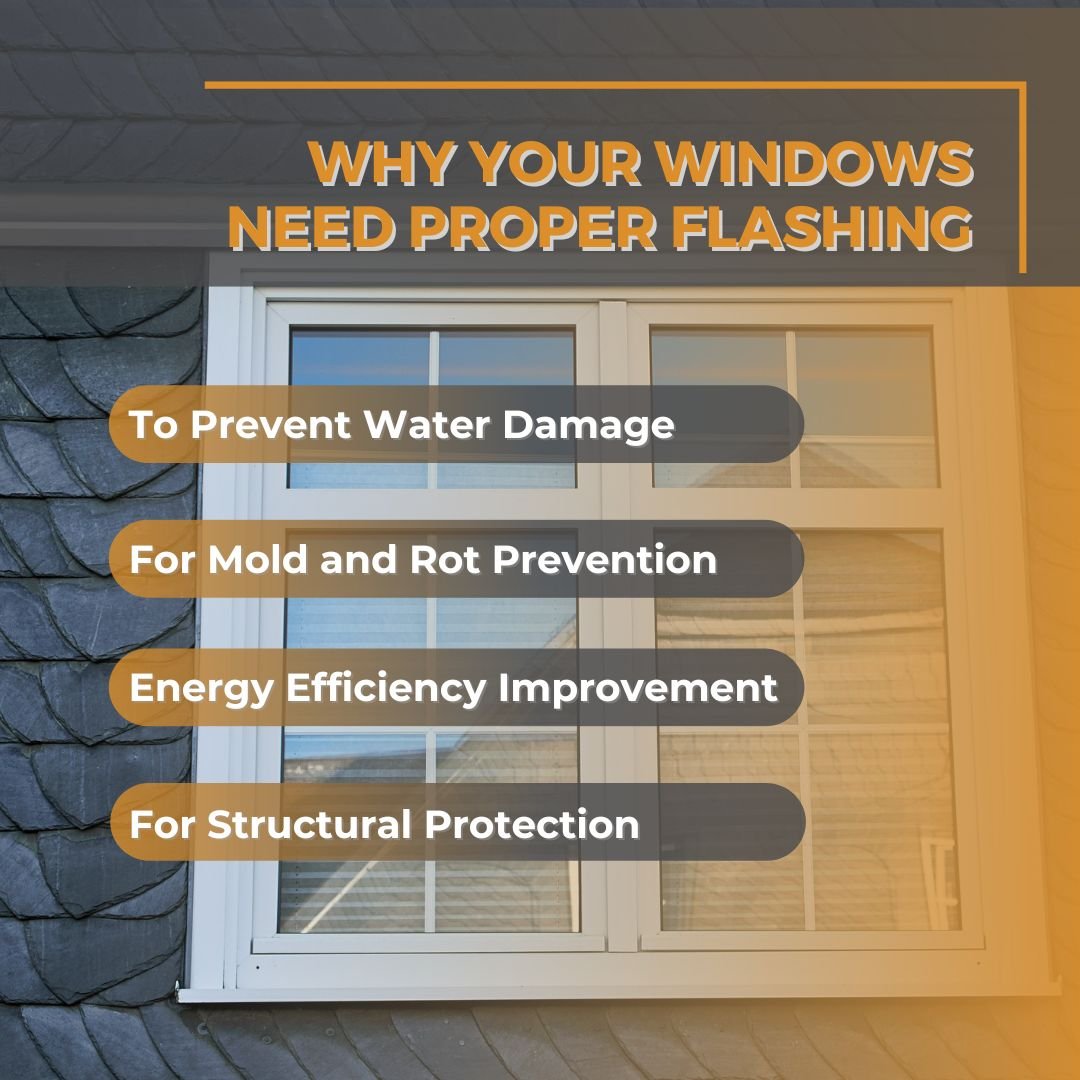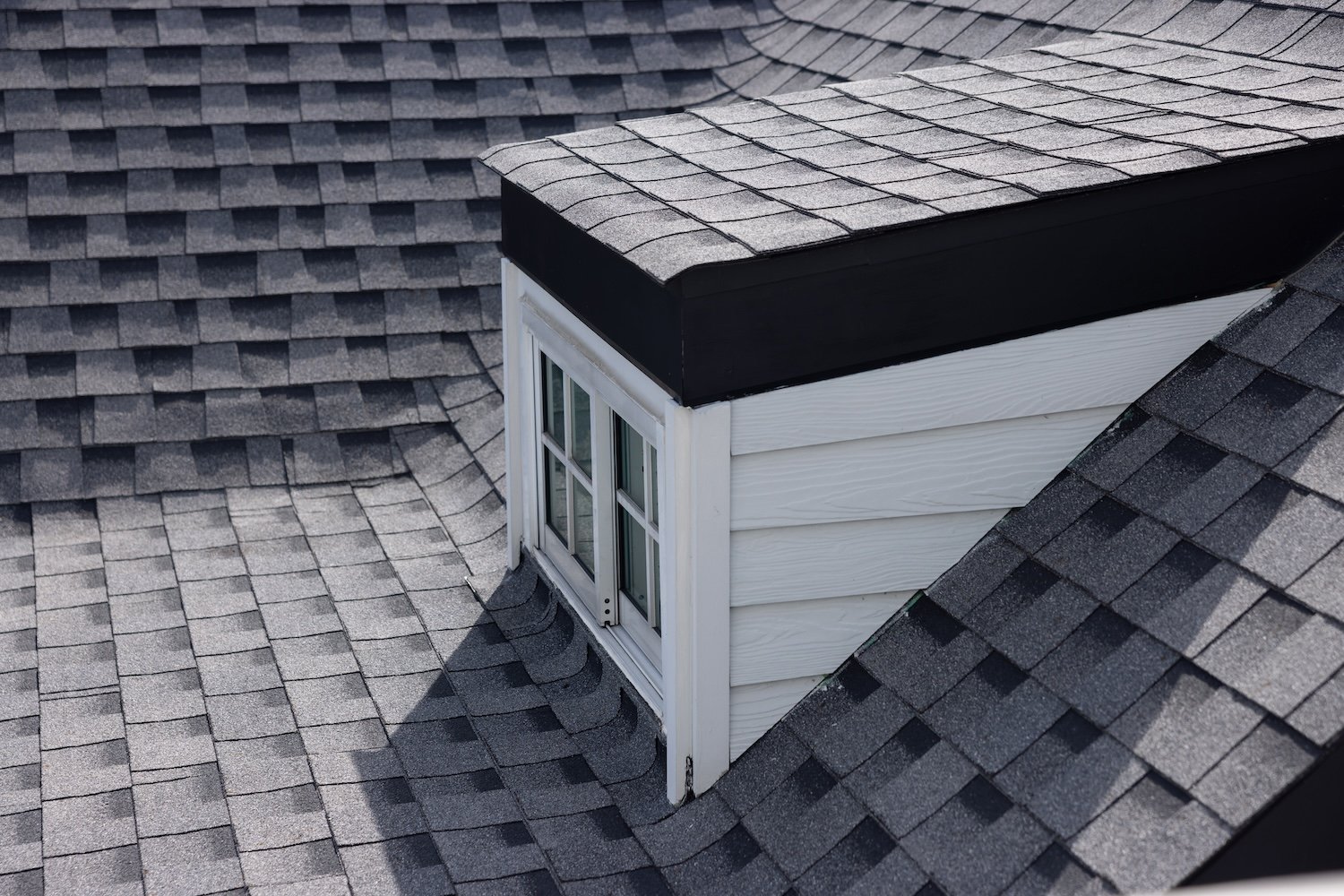Why Does a House Need Window Flashing?
Water might be the last thing on your mind when thinking about your home’s windows, but it can cause serious problems if it finds a way inside. That’s where window flashing becomes valuable, acting as a protective shield to prevent leaks and moisture from sneaking into your walls.
In this post, get ready to learn why window flashing is so essential for your home, how it works, and what you can do to keep your windows—and your house—protected from the elements.
What is Window Flashing?
Window flashing is a thin, weatherproof material installed around windows to block water from entering the gaps between the window frame and the surrounding wall. It creates a watertight seal that protects your home from leaks caused by rain, snow, or condensation.
Typically made from materials like metal, plastic, or rubber, flashing is designed to last and keep your home dry. The purpose is simple–ensure water stays outside where it belongs, protecting both your home's structure and its energy efficiency.
Why Does a Home Need It?
The biggest reason your home needs window flashing is simple: to keep water out. Water infiltration isn’t just annoying—it can cause serious, expensive problems that affect your entire home. Window flashing is critical because it:
Prevents Water Damage: Flashing keeps water from getting into your walls, saving insulation, drywall, and framing from damage.
Stops Mold and Rot: By preventing moisture buildup, flashing helps avoid the costly and dangerous consequences of mold growth and wood rot.
Improves Energy Efficiency: Flashing seals off air leaks around your windows, helping keep your home insulated and your energy bills low.
Maintains Structural Integrity: Water that seeps into your walls can weaken your home’s foundation over time, which flashing helps prevent.
Simply put, window flashing is your first line of defense when it comes to water-related damage. Without it, your home is left vulnerable to moisture that can cause significant and costly problems.
How Exactly Does it Work?
Window flashing works by creating a water-resistant seal around your windows. It’s installed in layers around the window frame, with each layer overlapping slightly to ensure that water is channeled away from the window and your walls.
The idea is to keep water moving outward, away from your home’s structure. Think of it as a raincoat for your windows—directing water to flow off and away, rather than letting it pool and cause damage.
When paired with other materials like caulking or weather stripping, flashing creates a solid defense against moisture.
Types of Window Flashing
There are different types of window flashing, each designed for specific situations and installation needs. Choosing the right one can depend on your home’s location, the climate, and the type of windows you have.
1) Rigid flashing is made from metals like aluminum or copper, rigid flashing is durable and long-lasting. It’s perfect for windows that are heavily exposed to weather conditions, providing robust protection against water.
2) Flexible flashing uses materials such as rubberized asphalt or peel-and-stick membranes, flexible flashing is easier to install and is perfect for windows with curved or uneven edges. It creates a tight, flexible seal that adapts to the window's shape.
3) Liquid-applied flashing is painted or sprayed onto the area around the window and dries to form a waterproof barrier. It’s a great option for hard-to-reach areas or irregular window shapes.
The type of flashing used depends on the specific needs of your home and windows. No matter which type is chosen, proper installation is crucial for effective protection.
Signs of Missing or Damaged Flashing
If the flashing is damaged or missing, the consequences can lead to major water damage inside your home. Watch for these warning signs:
Water Leaks Around Windows: These are clear signs that water is getting through.
Drafts or Cold Air: Drafts around your windows, even when closed, could indicate gaps caused by faulty flashing.
Mold or Mildew: Suggests moisture is penetrating the walls.
Warped or Rotted Window Frames: Flashing is not providing adequate protection against moisture.
Addressing these issues early is crucial to avoid more costly repairs. Damaged or ineffective flashing can result in significant long-term damage if left uncorrected.
Recommended Maintenance
While it doesn’t require constant attention, routine care and inspections will catch small problems before they become bigger issues. Keep flashing in good condition by checking windows after storms or periods of heavy rain. Look for water stains, leaks, or drafts to catch potential problems early.
Over time, caulking around windows windows can deteriorate, creating gaps where water can enter. If the caulking looks cracked or worn, replace it to maintain a tight seal. Debris like dirt, leaves, or grime can block drainage paths, making it easier for water to accumulate. Cleaning the area around windows ensures proper drainage and reduces the risk of water damage.
Windows aren’t the only places where flashing is installed, so make it a habit to inspect flashing around doors, roofs, and any other openings that could allow water inside.
When to Call a Professional
If you’re not sure whether to tackle a problem yourself, it’s always better to seek expert help. Consider calling a professional in the following cases:
Persistent Water Leaks: If water keeps leaking around your windows despite attempts to fix it, flashing may be damaged.
Improper Installation: Flashing that wasn’t installed correctly during window installation can cause ongoing problems.
New Installations or Renovations: Whenever new windows are being installed or major renovations are happening, having flashing installed or inspected by a contractor is essential.
Conclusion
Window flashing is an essential part of your home’s defense against moisture and water damage. It shields your home’s structure, prevents mold and rot, and helps keep energy costs down.
If you notice any signs of flashing damage or are planning new window installations, don’t wait. Reach out to Taylor Made’s team of experts to ensure your windows are sealed, protected, and built to last in Pensacola and surrounding areas.


